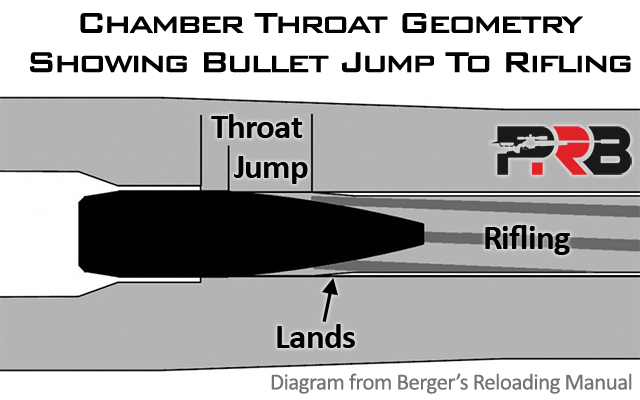Hi guys - I'm a 68 y.o. long time shotgunner but relatively new to rifle shooting. After spending decades reloading shotshell for skeet tournaments and getting bored as hell with it, my initial plan was to shoot factory ammo only. But as I'm gotten better with my shooting I found myself want to eliminate other sources of variability like velocity and its consistency (ES/SD.)
That and my very good friend, @GBMaryland has slowly convinced me to take up metallic reloading.....I will make him pay for throwing me down this rabbit hole someday (hahaha...joking of course).
Now, I'd like to ask a question that I have indeed discussed with my friend and this post doesn't indicate a lack of trust in what he is telling me (not at all). I would just like to solicit some input on this from others to see their take on it
The issue relates to bumping back shoulders when using a FL die. The FL die in question is a Redding and I plan to use Widden's click locking ring which is supposed to give me .001 bump back per click. Since I am new at this, I'm trying to keep it a bit simple and plan to just use this die to start and not an S type with bushings or anything other for the time being. I think this is wise but I'm open to input.
I'm also using a Whidden case gauge with a reference mark that shows shoulder position relative to SAAMI spec.
The cases are Hornady 6.5 CM shot out of my Proof Research SS barrel....gun bought very slightly used but as far as I know the chambering was NOT done with any custom reamer (and I really don't know squat about reamers, custom or otherwise). I do not plan to shoot this ammo in any other 6.5 CM gun, I do not shoot other people's reloads nor will I be giving them to anyone else to shoot in their gun, and do not anticipate getting another 6.5 CM gun so chamber differences are not an issue (I think).
Using the Whidden gauge, I found that Hornady 6.5 CM, ELD-M 140 gr is .002" short of SAAMI spec.
Using the same gauge on fired and tumbled brass, it shows the shoulders being .004" longer than SAAMI spec, this reflecting my actual chamber dimensions
So, .006 difference between factory and my fired cases.
So, should I set my die to:
1. Bump shoulders back .002 (or another mumber) from where they are as fired in my chamber
2. Bump back the entire .004 and get back to SAAMI as indicated by the Whidden gauge
3. Bump back all the way to .002 short of SAAMI spec as is the factory ammo.
I am a firm believer in doing independent research from reading, vids, convos with experienced reloader friends, etc before posting a question. But I haven't found any answers to this particular question and hope you don't mind helping a new guy out.
Shot shell was sooooo much easier....actually, its stupid simple compared to metallic.
Thank you for reading and perhaps offering some input.
That and my very good friend, @GBMaryland has slowly convinced me to take up metallic reloading.....I will make him pay for throwing me down this rabbit hole someday (hahaha...joking of course).
Now, I'd like to ask a question that I have indeed discussed with my friend and this post doesn't indicate a lack of trust in what he is telling me (not at all). I would just like to solicit some input on this from others to see their take on it
The issue relates to bumping back shoulders when using a FL die. The FL die in question is a Redding and I plan to use Widden's click locking ring which is supposed to give me .001 bump back per click. Since I am new at this, I'm trying to keep it a bit simple and plan to just use this die to start and not an S type with bushings or anything other for the time being. I think this is wise but I'm open to input.
I'm also using a Whidden case gauge with a reference mark that shows shoulder position relative to SAAMI spec.
The cases are Hornady 6.5 CM shot out of my Proof Research SS barrel....gun bought very slightly used but as far as I know the chambering was NOT done with any custom reamer (and I really don't know squat about reamers, custom or otherwise). I do not plan to shoot this ammo in any other 6.5 CM gun, I do not shoot other people's reloads nor will I be giving them to anyone else to shoot in their gun, and do not anticipate getting another 6.5 CM gun so chamber differences are not an issue (I think).
Using the Whidden gauge, I found that Hornady 6.5 CM, ELD-M 140 gr is .002" short of SAAMI spec.
Using the same gauge on fired and tumbled brass, it shows the shoulders being .004" longer than SAAMI spec, this reflecting my actual chamber dimensions
So, .006 difference between factory and my fired cases.
So, should I set my die to:
1. Bump shoulders back .002 (or another mumber) from where they are as fired in my chamber
2. Bump back the entire .004 and get back to SAAMI as indicated by the Whidden gauge
3. Bump back all the way to .002 short of SAAMI spec as is the factory ammo.
I am a firm believer in doing independent research from reading, vids, convos with experienced reloader friends, etc before posting a question. But I haven't found any answers to this particular question and hope you don't mind helping a new guy out.
Shot shell was sooooo much easier....actually, its stupid simple compared to metallic.
Thank you for reading and perhaps offering some input.

